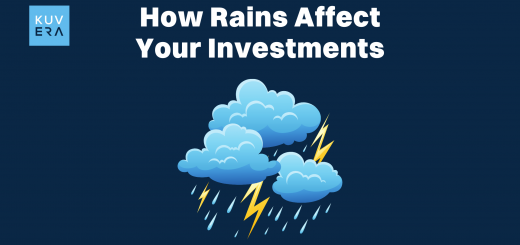Confused about your mutual fund scheme performance? Don’t know whether you are getting it right in terms of matching them to your goals or not? Don’t worry! There are several mutual fund performance measures and tools to your rescue.
Investing in mutual funds India can be a smart way to grow your wealth. However, with so many options available, it can be tough to know which funds are right for you and gauge its performance. To make informed investment decisions, it is crucial to understand how to analyse mutual fund performance. This involves looking beyond simple mutual fund returns and delving into key metrics like Net Asset Value (NAV), Alpha, Beta, Sharpe Ratio, R-squared, and Standard Deviation.
Through this blog we aim to guide you through these metrics, helping you make sense of mutual fund return potential and risks. But let us first look at the significance of performance analysis.
Look for different mutual fund types and match with your financial goals using the Kuvera portal.
Why is it important to analyse mutual fund scheme performance?
Analysing mutual fund scheme performance could help you understand if you are on the right track with your financial goals, or, whether their potential risk and return would be suitable for your goals. It is crucial for several reasons:
- Informed Investment Decisions: Understanding how a fund has performed historically can help you gauge its potential for future growth. This allows you to make informed decisions about where to invest your money.
- Identifying Strengths and Weaknesses: Analysing performance metrics helps you identify a fund’s strengths and weaknesses relative to its benchmark and peers.
- Risk Assessment: Metrics like Standard Deviation and Beta provide insights into the fund’s volatility and risk level, helping you align your investments with your risk tolerance.
Analysing mutual fund scheme performance through NAV (Net Asst Value), ratios, alpha, beta and more can be a part of the modern portfolio theory.
What is Modern Portfolio Theory (MPT)?
Modern Portfolio Theory (MPT) provides a framework for constructing an investment portfolio to maximise potential returns for a given level of risk. MPT emphasises diversification and the relationship between risk and return. It suggests that investors can optimise their portfolios by selecting assets with low correlation to each other. This helps in minimising risk while potentially enhancing returns. Understanding MPT can provide context for many of the performance metrics discussed below.
NAV as a measure of mutual fund performance
Net Asset Value (NAV) represents the per-unit market value of a mutual fund India. It is calculated by dividing the total net assets of the fund by the number of outstanding units. While NAV is often the first thing investors look at, it is essential to understand that it does not tell the whole story of mutual fund performance.
- NAV and Daily Fluctuations: NAV fluctuates daily based on the market value of the securities held in the fund’s portfolio.
- Not a Sole Indicator: A higher NAV does not necessarily mean a fund is better. It is vital to consider NAV in conjunction with other metrics and the fund’s investment objective.
- Use in Tracking Growth: While not a comprehensive measure, NAV can be used to track the growth of your investment over time. Comparing the current NAV to your purchase NAV gives you an idea of how your investment has appreciated.
Alpha and Beta for mutual fund performance
Alpha and Beta are key metrics used to evaluate mutual fund returns in relation to a benchmark index, such as the NIFTY 50:
- Alpha: Alpha measures a fund manager’s ability to generate returns above the benchmark. A positive Alpha suggests the fund has outperformed the benchmark, while a negative Alpha indicates underperformance. It essentially reflects the value added by the fund manager’s skill.
- Beta: Beta measures a fund’s volatility relative to the market. A Beta of 1 means the fund’s price will move in the same direction as the market, while a Beta greater than 1 indicates higher volatility. A Beta of less than 1 suggests lower volatility compared to the market.
Analysing Alpha and Beta together can provide valuable insights into a fund’s risk-adjusted returns. A high Alpha with a low Beta is generally desirable. This could indicate higher returns with lower volatility.
How Sharpe ratio gauges mutual funds performance
The Sharpe ratio is a crucial metric for assessing risk-adjusted mutual fund return. It measures the excess return a fund generates for each unit of risk taken.
- Calculation: The Sharpe ratio is calculated by subtracting the risk-free rate of return (typically a government bond yield) from the fund’s return and dividing the result by the fund’s standard deviation.
- Higher Sharpe Ratio is Better: A higher Sharpe ratio indicates better risk-adjusted performance. It means the fund is generating higher returns for the level of risk it carries.
Comparing Funds: The Sharpe ratio is particularly useful for comparing different mutual funds India with varying risk profiles.
The role of r-squared and standard deviation in gauging mutual funds performance
R-squared and Standard Deviation are two more important metrics to consider when evaluating mutual fund performance:
- R-squared: R-squared measures how closely a fund’s returns track the returns of its benchmark index. A higher R-squared (closer to 1) indicates a strong correlation with the benchmark, while a lower R-squared suggests the fund’s performance is less dependent on the benchmark.
- Standard Deviation: Standard Deviation measures the volatility of a fund’s returns. A higher standard deviation indicates greater volatility and potentially higher risk.
Understanding R-squared can help you assess the effectiveness of a fund’s investment strategy in relation to its benchmark. Meanwhile, Standard Deviation provides insight into the potential for fluctuations in mutual fund returns.
Want to learn more about mutual fund schemes and mutual fund performance, check our blogs page here.
Wrapping Up
Analysing mutual fund performance involves going beyond simple mutual fund returns and considering a range of metrics. NAV, Alpha, Beta, Sharpe Ratio, R-squared, and Standard Deviation each provide unique insights into a fund’s potential, risk, and performance relative to its benchmark. By understanding these metrics, investors can make more informed decisions, choose funds that align with their risk tolerance, and work towards achieving their financial goals through strategic investments in mutual funds India.
Interested in how we think about the markets?
Read more: Zen And The Art Of Investing
Watch here: Is UPI Killing the Toffee Business?












